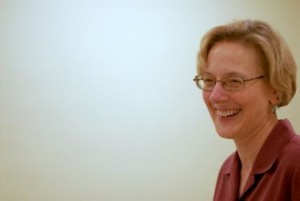New paper details cases from Texas, Wisconsin and Missouri where presumed-to-be-gay students and faculty were purged from colleges in the 1940s.
RIVERSIDE, Calif. (www.ucr.edu) — Uncovering a little known aspect of history, a University of California, Riverside associate professor has published a paper about purges of gay students and faculty at at least three universities in the 1940s.
The paper details incidents at the University of Texas, the University of Wisconsin and the University of Missouri, where students or faculty presumed to be homosexual were expelled or fired. Two of the universities – Wisconsin and Missouri – created administrative machinery to track students and faculty that were purged, helping to hinder their future success.

“In LGBT history, very little attention is paid to anything before the Stonewall riots in 1969,” said Margaret Nash, an associate professor at UC Riverside’s Graduate School of Education. “When people do take note they say, ‘Oh, that’s part of McCarthyism.’ But, in these cases, it wasn’t. These cases preceded McCarthyism. Who knew?”
She compared what was happening in the gay community in the 1940s to the events of today. In the late 1940s, there was a movement toward greater acceptance of gays, after the publication of the Kinsey Report which documented that homosexual activity was far more common than many people believed. But just as some people moved toward acceptance, others moved toward increasing harshness.
Meanwhile, today, the legalization of gay marriage draws a lot of attention, but at the same time you can lose your job or your housing in about 30 states. There are also high profile incidents involving people such as Kim Davis, the county clerk who refused to grant marriage licenses to same sex couples.
The paper, “An Indelible Mark”: Gay Purges in Higher Education in the 1940s,” was published this month in the journal History of Higher Education Quarterly. It was co-authored by Nash and Jennifer Silverman, who earned her Ph.D. in December after studying with Nash and is now the associate registrar at the University of La Verne.
It is well known that in a general way homosexuals were discriminated against during the 1940s and 1950s, when there were gay purges in the military, federal government, and of K–12 teachers and faculty.
However, there is scant documentation about the treatment of homosexuality on college campuses. While there are some historical works on this topic, including studies that focus on Dartmouth and Harvard in the 1920s, the researchers found none that examine the immediate post-World War II period.
Here are more details about the three cases the paper focuses on. (The authors used pseudonyms for some people named in the paper to protect their privacy and the privacy of their families.)
- In 1944, the Texas Regents dismissed University of Texas President Homer Rainey. Rainey had previously been the subject of controversy for opposing to fire faculty for their political views and opposing to censor literature. To further bolster the case against him, the Regents contended he had not taken swift or severe enough action against gays on campus.
- In 1948, four University of Wisconsin students pleaded guilty to engaging in homosexual activities and were given one year’s probation and a warning from the judge that they had caused an “indelible mark” to be placed against them. Two years later, one of those students, “Keith Pritchett,” who was about to graduate at the time he was given probation, asked the university of grant his degree. The World War II veteran expected to be called back to active duty because of the Korean conflict and wanted the degree so he could be promoted. Despite positive recommendations from military officials, the university denied his request.
- Also in 1948, a tenured journalism professor who had worked at the University of Missouri for 24 years was dismissed for being the principal leader of a purported ring that was said to include homosexual students, faculty and community members. “Richard Jackson,” a student at the university, was one of the students administrators said was part of the homosexual ring. A group called the Committee on Discipline expelled Jackson in 1949 despite clearly saying they did not have any solid evidence that Jackson was homosexual or had engaged in homosexual acts. Instead, they said Jackson’s unacceptable actions were that “he associated frequently if not exclusively with homosexuals and persons believed to be homosexuals, and attended their ‘gay’ parties.”
The presuming guilt-by-association reasoning foreshadows the thought process that fueled McCarthyism in the coming years, the researchers point out. Jackson’s appeal was denied and he was also denied admission to two other colleges because of the dismissal from the University of Missouri.
Nash plans to focus future research in a few directions.
First, she is looking for more cases of gay purges in higher education during this time. They have already found additional examples from the universities discussed in this paper, as well as a possible case from the University of Illinois.
Second, she wants to look at cross-institutional conversations related to purging homosexuals. They found evidence of Missouri officials drawing on the expertise of officials at Wisconsin and believe more such conversations could have occurred.
Third, she is interested in further examining the case at the University of Texas. They are curious how much this incident may have influenced other universities.











